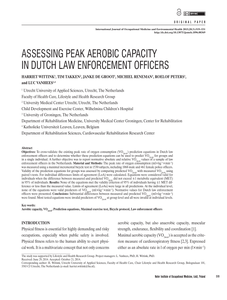Copyright enforcement by private third parties – does it work uniformly across the EU? Since the inception of Napster, home copying of digital files has taken a flight. The first providers of software or infrastructure for the illegal exchange of files were held contributory or vicariously liable for copyright infringement. In response, they quickly diluted the chain of liability to such an extent that neither the software producers, nor the service providers could be held liable. Moving further down the communication chain, the rights holders are now requiring Internet Service Providers (ISPs) that provide access to end customers to help them with the enforcement of their rights. This article discusses case-law regarding the enforcement of copyright by Internet Access Providers throughout Europe. At first glance, copyright enforcement has been harmonised by means of a number of directives, and article 8(3) of the Copyright Directive (2001/29/EC) regulates that EU Member States must ensure the position of rights holders with regard to injunctions against ISPs. Problem solved? Case law from Denmark, Ireland, Belgium, Norway, England, The Netherlands, Austria and the Court of Justice of the EU was studied. In addition, the legal practice in Germany was examined. The period of time covered by case law is from 2003 to 2013, the case law gives insight into the differences that still exist after the implementation of the directive.
DOCUMENT

Objectives: To cross-validate the existing peak rate of oxygen consumption (VO2peak) prediction equations in Dutch law enforcement officers and to determine whether these prediction equations can be used to predict VO2peak for groups and in a single individual. A further objective was to report normative absolute and relative VO2peak values of a sample of law enforcement officers in the Netherlands. Material and Methods: The peak rate of oxygen consumption (ml×kg–1×min–1) was measured using a maximal incremental bicycle test in 1530 subjects, including 1068 male and 461 female police officers. Validity of the prediction equations for groups was assessed by comparing predicted VO2peak with measured VO2peak using paired t-tests. For individual differences limits of agreement (LoA) were calculated. Equations were considered valid for individuals when the difference between measured and predicted VO2peak did not exceed ±1 metabolic equivalent (MET) in 95% of individuals. Results: None of the equations met the validity criterion of 95% of individuals having ±1 MET difference or less than the measured value. Limits of agreement (LoAs) were large in all predictions. At the individual level, none of the equations were valid predictors of VO2peak (ml×kg–1×min–1). Normative values for Dutch law enforcement officers were presented. Conclusions: Substantial differences between measured and predicted VO2peak (ml×kg–1×min–1) were found. Most tested equations were invalid predictors of VO2peak at group level and all were invalid at individual levels.
DOCUMENT

According to Zillmann (2000) viewers function as “untiring moral monitors”; relentlessly coming to moral judgments about the actions and motives of protagonists and antagonists. How does this “moral monitoring” apply to morally ambiguous crime TV drama that features unlawful protagonists? The current exploratory study is based on qualitative interviews (N = 3 × 20) that aimed to provide insight in the grounds of moral evaluations of three selected episodes of mobster drama series The Sopranos. Viewers of three distinctive moral subcultures (i.e., prisoners, law enforcement agents, and civilians) were interviewed. The results revealed that the majority of prisoners and law enforcement agents grounded their moral evaluations mostly in their professional opinions and experiences, and came to fairly strict, yet different moral evaluations. In contrast, most of the civilians had a more “lenient” association with narratives and characters. Civilians generally based their evaluations on the morally ambiguous story world, and therefore showcased more nuances in their moral judgments.
LINK
Wildlife crime is an important driver of biodiversity loss and disrupts the social and economic activities of local communities. During the last decade, poaching of charismatic megafauna, such as elephant and rhino, has increased strongly, driving these species to the brink of extinction. Early detection of poachers will strengthen the necessary law enforcement of park rangers in their battle against poaching. Internationally, innovative, high tech solutions are sought after to prevent poaching, such as wireless sensor networks where animals function as sensors. Movement of individuals of widely abundant, non-threatened wildlife species, for example, can be remotely monitored ‘real time’ using GPS-sensors. Deviations in movement of these species can be used to indicate the presence of poachers and prevent poaching. However, the discriminative power of the present movement sensor networks is limited. Recent advancements in biosensors led to the development of instruments that can remotely measure animal behaviour and physiology. These biosensors contribute to the sensitivity and specificity of such early warning system. Moreover, miniaturization and low cost production of sensors have increased the possibilities to measure multiple animals in a herd at the same time. Incorporating data about within-herd spatial position, group size and group composition will improve the successful detection of poachers. Our objective is to develop a wireless network of multiple sensors for sensing alarm responses of ungulate herds to prevent poaching of rhinos and elephants.